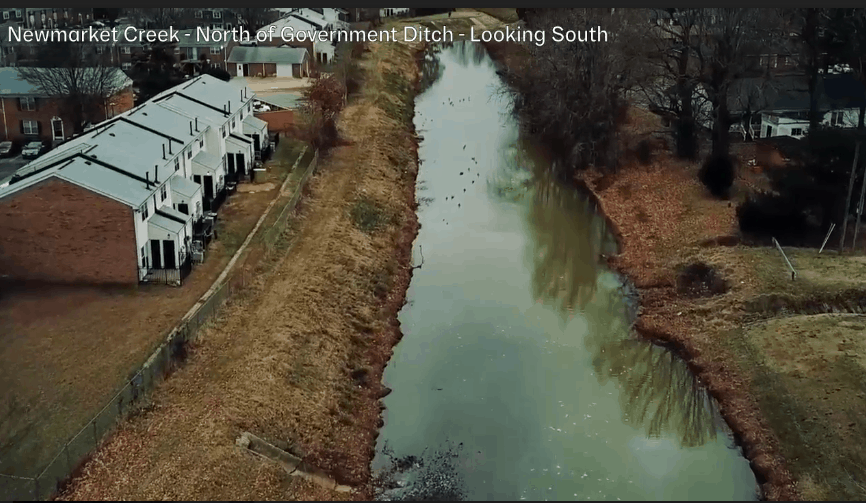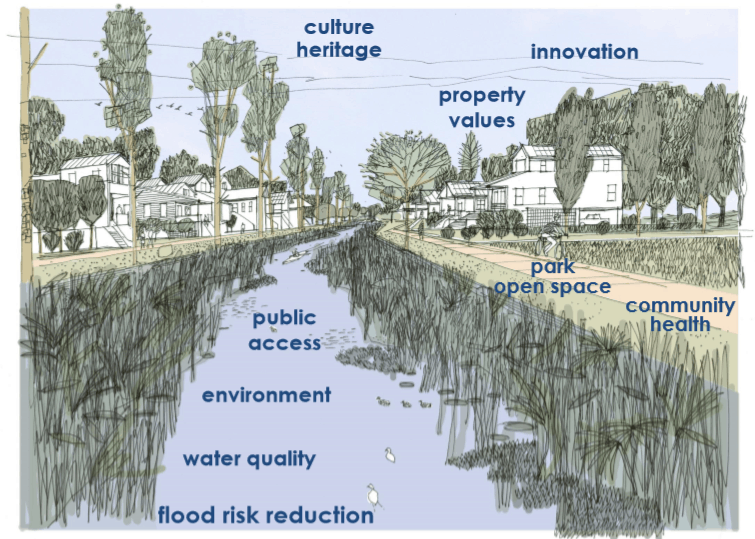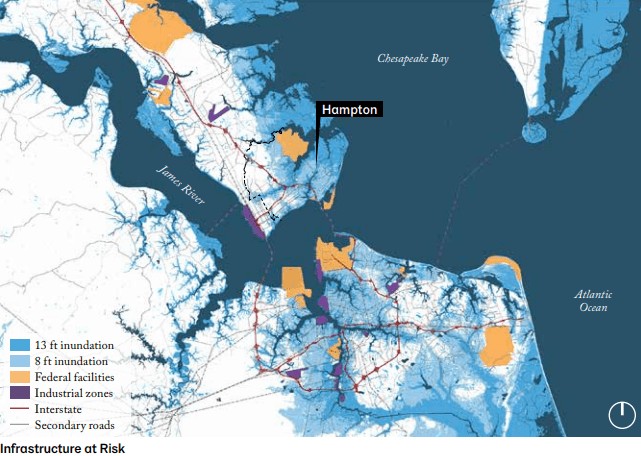Hampton Roads is certainly no stranger to flooding, and now one of the region’s cities is getting creative in its efforts to become resilient in the face of rising waters.
The city of Hampton is in the midst of Resilient Hampton, a multi-phase initiative to strengthen the city against flooding while improving the environment and quality of life for residents.
Experts from the Chesapeake to New Orleans, and even a group from the Netherlands, convened in Hampton last week to come up with possible solutions.
Terry O’Neill, Director of Community Development for the City of Hampton, describes Resilient Hampton as a “holistic approach to addressing chronic stresses such as storm threats and recurrent flooding and enabling recovery from extreme events. It takes advantage of the benefits provided by our community’s inherent strengths, including our waterways. Hampton has brought in experts who have experience in these issues from near and far to help plan solutions to flooding that also reduce pollution, boost the economy, and improve quality of life.”
During Phase I of Resilient Hampton, experts assessed the city’s geography, reviewed sea level rise and climate change data, and established a framework and goals for the endeavor. Phase I also selected Newmarket Creek as Resilient Hampton’s first pilot project.

The goals for Phase II include creating a Newmarket Creek Water Plan, identifying projects that reduce flooding and improve surrounding communities, and addressing funding options. The team behind Resilient Hampton also wants to “test an evaluation tool the city can use to determine how resilient a project is.”
Last week, the city hosted a group of experts from local and visiting organizations: the Chesapeake Bay Foundation (CBF); the New Orleans-based Waggoner & Ball design firm; the Army Corps of Engineers; Old Dominion University; Hampton University; investment adviser Quantified Ventures; and Bosch Slabbers, a Dutch landscape and urban design firm.
Kenny Fletcher, CBF Virginia Communications Coordinator, says the experts toured locations throughout Hampton and collaborated to develop projects that could be put into place throughout the Newmarket Creek watershed. Concepts were then presented to and discussed with Hampton residents.

So far, Resilient Hampton has been financed by the city, but Fletcher says “Hampton is considering becoming the first city in Virginia to use private investment to pay for these projects with environmental impact bonds—a creative new funding tool offered under a partnership with CBF and investment advisory firm Quantified Ventures.”
Environmental impact bonds (EIBs) allow private investors to help fund projects that support the “greening” of city infrastructure. “These investors share the financial risk with the city if projects don’t perform as well as expected, but earn increased returns if they succeed beyond expectations,” CBF explains.
EIBs are already in use for projects in Washington, DC and Atlanta, and they’ve also supported stormwater improvement efforts in Baltimore.
CBF Lands Program Director and Special Counsel Lee Epstein, who’s been at the helm of the Foundation’s involvement with Resilient Hampton, says the city is up against both tidal flooding, which has become an even greater problem due to climate change, and localized flooding. CBF is hoping that “nature-based” projects can be put into place to handle excess water, he says. “The kind of projects that we envision and we would love to see implemented are projects that manage water in a very natural way. And they do it well.” Projects such as rain gardens and bioswales, which are used to manage polluted runoff, tackle both water quantity and water quality, says Epstein.
Epstein notes that the benefits of green infrastructure projects will extend beyond just helping Hampton tackle the immediate effects of flooding; the environment, the city’s aesthetic, public health, and property values will all improve, too.
As for the next chapter of Resilient Hampton, the city and the initiative’s consultants will refine proposed projects and ideas and cost them out under a several-year plan, Epstein says. He adds how impressed CBF has been with Hampton’s proactive and creative thinking concerning both the concrete projects and their financing. “This is an innovative thing.”
To learn more about Resilient Hampton, click here.
–Laura Adams Boycourt



